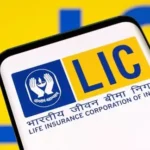In a rapidly evolving world of innovation, few companies have consistently kept pace with technology and consumer expectations like LG Corporation. Headquartered in Seoul, South Korea, LG has become a global powerhouse in electronics, home appliances, renewable energy, and digital solutions. In India, LG is a household name synonymous with reliability and performance, offering a diverse portfolio ranging from air conditioners and washing machines to smart TVs and smartphones. As of 2025, LG is focusing on futuristic ventures such as AI-powered devices, electric vehicle (EV) components, and smart home ecosystems, making it a brand with a dynamic future. With a legacy of quality and a forward-thinking mindset, let’s explore a detailed SWOT analysis of LG Company to understand its strengths, weaknesses, opportunities, and threats in today’s business environment.

Strengths
1. Strong Global Brand Reputation
LG is one of the world’s most recognized electronics brands. Ranked among the top global brands by Interbrand, LG has built strong brand equity through decades of innovation, customer satisfaction, and marketing excellence. Its brand is particularly strong in Asia, North America, and emerging markets like India, where LG enjoys a dominant share in consumer durables.
2. Diverse Product Portfolio
One of LG’s key strengths is its vast product lineup, which spans home appliances, televisions, mobile communications, display panels, air solutions, and EV components. This diversity not only hedges against market volatility but also enables LG to cross-leverage technologies between different verticals, such as integrating AI across appliances and consumer electronics.
3. Innovation and R&D Capabilities
LG consistently invests in research and development, having spent billions annually on innovation. From launching AI-enabled ThinQ appliances to its OLED TV technology and advanced EV batteries through LG Energy Solution, the company continues to be at the forefront of technological advancement.
4. Strong Supply Chain and Manufacturing Network
With global manufacturing hubs in countries like India, China, Vietnam, and South Korea, LG has created an efficient supply chain that ensures timely delivery and cost-effective production. The Make in India initiative has further strengthened LG’s manufacturing presence in India, leading to better market responsiveness and local employment generation.
Weaknesses
1. Exit from Smartphone Market
In 2021, LG officially exited the smartphone business, citing persistent losses and intense competition. While this decision allowed LG to focus on more profitable verticals, it also marked the loss of a significant consumer electronics segment and reduced its footprint in the rapidly growing mobile ecosystem.
2. Dependence on Mature Markets
Despite a growing presence in emerging economies, LG still earns a large portion of its revenue from saturated markets like North America and Europe. This heavy reliance can limit growth prospects, especially in the face of economic slowdowns or changing consumer behavior in these regions.
3. Brand Perception in Premium Segments
In markets like India, LG is seen primarily as a reliable and value-for-money brand. However, when it comes to premium segments, especially luxury home appliances and designer electronics, it often loses out to brands like Samsung, Bosch, or Apple in consumer preference.
Opportunities
1. Rising Demand for Smart Homes and IoT Devices
The global smart home market is projected to exceed $400 billion by 2030. LG, with its AI-powered ThinQ platform, is uniquely positioned to capitalize on this boom. From smart TVs to refrigerators that can suggest recipes, LG’s integrated product ecosystem aligns well with connected living trends.
2. Expansion in EV and Renewable Energy Sectors
LG Energy Solution, one of the world’s largest EV battery manufacturers, is becoming a pivotal player in the green mobility revolution. With partnerships with Tesla, General Motors, and Hyundai, LG has immense potential to dominate the electric vehicle battery segment. Moreover, its ventures into solar energy solutions and energy storage systems (ESS) align with global decarbonization goals.
3. Growth in Indian and Southeast Asian Markets
India, with its booming middle class and increasing disposable income, represents a high-growth opportunity for LG. The brand is already a market leader in TVs, air conditioners, and washing machines. By expanding its premium offerings and rural penetration, LG can further solidify its presence.
4. AI, Robotics, and Healthcare Technology
LG is actively investing in future-forward technologies like robotics, AI, and digital healthcare devices. Products like the LG CLOi robot series and remote healthcare monitoring tools are being developed to tap into these next-gen markets.
Threats
1. Intense Competition from Global and Local Players
LG faces stiff competition from global giants like Samsung, Sony, Panasonic, and Whirlpool, as well as emerging Chinese brands like Haier, Xiaomi, and Hisense, which often offer similar technology at competitive prices. In India, local brands such as Voltas and Godrej are also strong contenders in specific segments.
2. Rapid Technological Changes
In an industry driven by constant innovation, product lifecycles are getting shorter. The challenge for LG is to remain agile, avoiding product obsolescence while keeping R&D costs under control. Missing a technology trend can result in significant market share loss.
3. Geopolitical and Supply Chain Risks
LG’s global operations expose it to risks such as trade tensions (e.g., US-China), raw material shortages, and logistical bottlenecks. The COVID-19 pandemic and the Russia-Ukraine conflict demonstrated how vulnerable even the strongest supply chains can be.
4. Environmental Regulations and Sustainability Pressures
Governments worldwide are tightening environmental regulations. While LG is investing in sustainable manufacturing and recyclable materials, compliance and transformation costs can impact profitability. Moreover, eco-conscious consumers increasingly expect transparent ESG commitments.
Conclusion
LG Corporation continues to be a resilient, innovative, and future-ready company, embracing global challenges and opportunities with strategic foresight. Its diversified portfolio, technological prowess, and strong brand equity make it a formidable force in the electronics and appliances industry. By investing in emerging markets, green technology, and smart innovations, LG is not just surviving but thriving in the ever-evolving digital world. For stakeholders and consumers alike, LG represents a blend of trust, performance, and progressive thinking—a true leader in the global tech ecosystem.

Meet Suhas Harshe, a financial advisor committed to assisting people and businesses in confidently understanding and managing the complexities of the financial world. Suhas has shared his knowledge on various topics like business, investment strategies, optimizing taxes, and promoting financial well-being through articles in InvestmentDose.com


